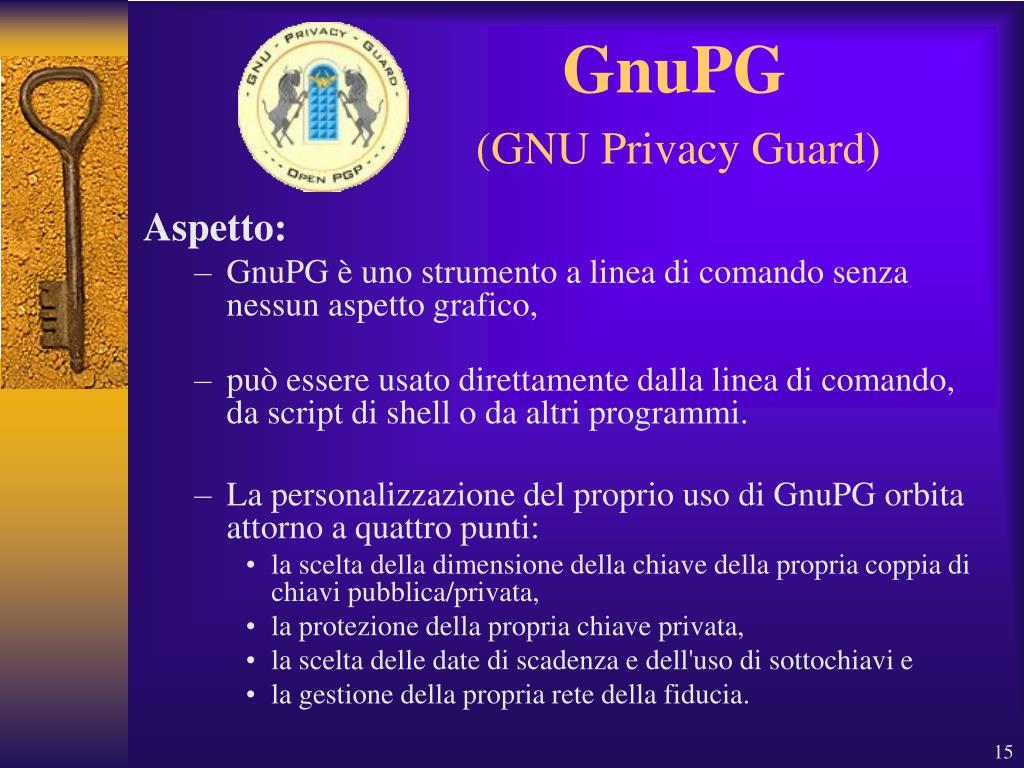
#GNU PRIVACY GUARD REVIEW SOFTWARE#
Its availability as free software means that its users have the freedom to use, modify, and distribute it as they please. GPG is widely used by individuals and organizations around the world for secure communication. Integration with email clients for secure email transmission.Support for public key infrastructure (PKI) to manage keys used for encryption and decryption.Creating digital signatures for messages to verify sender's identity and ensure message integrity.Strong encryption algorithms such as AES and Twofish.It also has a command-line interface for advanced users and can be integrated with popular email clients such as Thunderbird and Microsoft Outlook. GPG is available for multiple operating systems, including Windows, macOS, and Linux.

Users can create digital signatures to verify the authenticity of messages they send, and can also encrypt messages to ensure their privacy. GPG uses a combination of symmetric-key and public key cryptography to secure emails, documents, and other sensitive information. It is developed by the Free Software Foundation and is a replacement for the proprietary software, PGP (Pretty Good Privacy). Or do what I do, and simply verify that your existing recurring event will happen again at a suitable date.The GNU Privacy Guard (GPG) is a free and open-source software tool that provides encryption and digital signature capabilities. Since you know you won’t remember to repeat this in two years, create a reminder now.Verify that the change was uploaded correctly, by going to the keyserver on your browser of choice, and searching for your own email:.Where again XXXXXXXX is the key ID / fingerprint for the key in question. Finally, if everything is ok, you need to publish these changes on the keyserver:.You should verify here that the expiry dates have been updated correctly for the primary key and any subkeys you want to keep. Review changes by listing the secret keys again:.At this point we can save what we did and exit:.Repeat for subkeys – you should generally have one used for encrypting with:.

2 years, or maybe a month longer to give yourself time to review this again before it actually expires):

Set the expiration for the primary key (usually the one used for signing and certification), setting the duration to a reasonable time (e.g.This command will select the master key and put you in GPG command mode. Where XXXXXXXX is the key ID / fingerprint for the key in question. This is useful to expose the key fingerprints you want to refer to in later commands. I’m using GnuPG v2.2.4 on Ubuntu 18.04 LTS, but I don’t doubt this will remain valid in later versions, as the GnuPG interface is very stable. GUIs are great, but they change too much, and often hide details, making them less useful for this kind of thing. I’ll be using the command-line method below, as it’s a bit more explicit, and that way I’m certain that what I’m doing is what I intend. As usual, this is mostly for myself to follow every time I’ll need it (as I know I’ll forget all this in two years), while hoping it’s also useful for others. While there are more complete guides available (see the references at the bottom of this post), I’m writing this as a concise set of instructions. Extend expiry date by another two years, if everything is ok.This does not introduce a need to create new keys, but simply to extend the expiry date. This ensures that if the secret key material is lost or misplaced at any point, there is a safety mechanism that ensures the keys are no longer valid after a certain point. It is a good practice with encryption keys to have these expire regularly (two years is a good place to start).


 0 kommentar(er)
0 kommentar(er)
